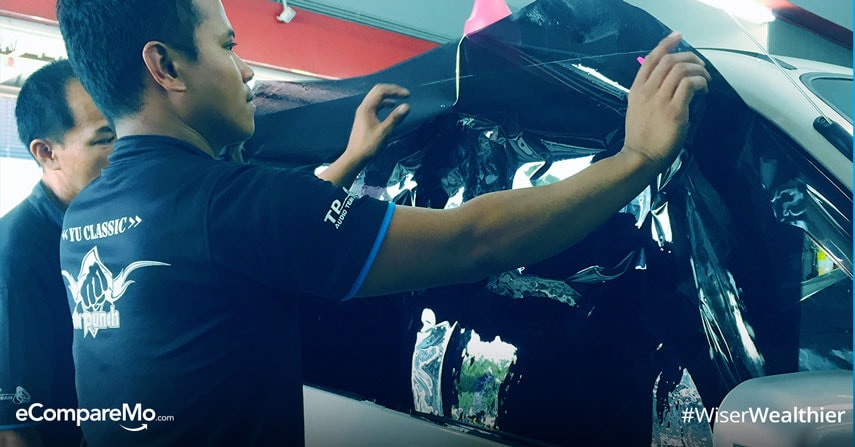8 Things You Didn’t Know About Car Tints
3 min readLast year, the government hinted that it was planning to regulate the window tint of cars in 2018. Now, Top Gear Philippines reports that the Land Transportation Office (LTO) will do further consultations with different stakeholders regarding the proposed law.
While there is no official word yet on the guidelines and implementation of the proposed policy, we thought it might be interesting and even fun to share some facts about car window tints. Don’t worry, unlike the tints, your knowledge of the facts here won’t be graded.

1. The first window tints were sprayed on
Back in World War II, the original mass market car window tints were applied to windshields by spraying. However, these liquid tints tended to produce uneven results. Never the less, the use of sprayed-on window dye went on until 1966.
2. The first window tint films were “purpleâ€
In 1966, the first wave of tinting films arrived in the market. However, the pigmentation used by these were dye-based so they would fade into a rather terrible shade of purple over time. In addition, the flimsy material used in these films made them prone to bubbling in hot weather.
(Read: 8 Ways You Unwittingly Damage Your Car)
After decades of experimentation, modern car tints now use nanoparticles to block off UV rays, keep cars cool, and not interfere with radio signals. Also, they don’t become purple anymore!
3. Not all car window tints are equal
Installing window tints isn’t a one-size-fits-all solution for all your needs. For instance, metallic window films tend to be more effective in blocking off heat and ultraviolet rays for a cooler interior, but they tend to interfere with mobile and radio signal.
Meanwhile, non-metallic films may fare worse in heat reduction and tend to come in lighter grades, but they do not cause signal interference. You just need to decide for yourself what is the most important feature you’re looking for in a window tint and choose accordingly.
4. Some tints can also deter car theft
Modern car windows may be made with tempered glass, which prevents them from shattering in case of a car crash. However, you can also add an extra layer of security by getting a window film that holds together glass even when someone tries to break it. Not only does it come in handy against thieves, it can also protect you from shattered glass in the event of a car accident.
5. Window tint is graded through VLT
Car window tint is measured in visible light transmission (VLT) levels, which is the percentage of visible light allowed to penetrate the film. The lower the percentage of the VLT, the darker the tint. So if you go to a window tint specialist and ask for a window film with 35-percent VLT, it means that the film only allows 35-percent of visible light to pass through.
6. A gizmo can be used to measure VLT
Once the government implements a window tint regulation, they have to arm traffic constables with gadgets that can measure the VLT percentage of a window.
These machines work by placing the portion of the glass between the visible light meter and the gadget will measure how much light can pass through. If the LTO implements the car tint regulation without these, it’s impossible to actually say if a person has violated the law or not.
7. Other countries have car tint regulations
Once the law comes out, the Philippines will be joining the list of countries that regulate the window tint allowed on vehicles. In the United States, for instance, each state has its own law regarding window tints, which can get pretty messy for some people. Some countries like New Zealand make it mandatory for cars to have factory tints at least 35% VLT.
8. Window tint is banned in some countries
While other countries only regulate the amount of light permitted by the window film, countries like Portugal, Belarus, Libya, Libya, Kuwait, Bolivia, Iraq, Kenya, and Pakistan prohibit any tint at all.
Egypt and Cyprus prohibit window films from being installed but tinted glass is fine. Turkmenistan also cracks down on any window tint—but other things are also illegal in the country such as two-door cars, engines with displacement above 3L, cars older than five years, among other. More on that in another article.
Other Sources: Stereo West Auto Toys, AZ Solar Control, Solar Control Films, Inc., 3M, Diversity Auto Films, Delight And Inspire.com
